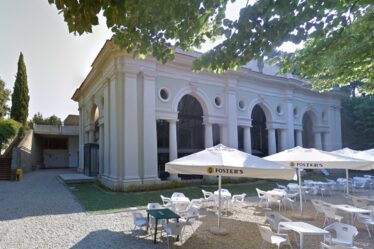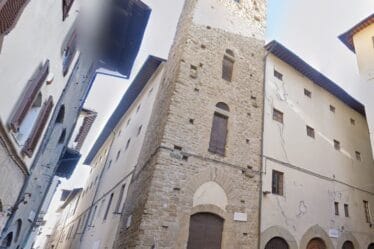

Divine Punishment Over Florence — the night the city trembled. On September 28, 1453, at exactly 10:45 p.m., Florence was shaken by an earthquake that terrified its people and ignited fears of divine wrath. The city, still reeling from the fall of Constantinople a few months earlier, felt the weight of a world changing — and now, even the ground beneath it refused to stay still.
Fear and Faith: When the Earth Shook Florence
That year, anxiety already gripped Europe. The fall of Constantinople had marked the symbolic end of an era, and the sense of apocalypse hung heavy in the air. In Divine Punishment Over Florence, the tremors that struck from the northeast hit with a magnitude of 5.3, shaking hills, towers, and human certainty alike.
Suddenly, bells rang on their own, glass shattered, and the flickering light of torches painted restless shadows on frescoed walls. People rushed into the streets — barefoot, half-dressed, wrapped in cloaks — shouting that Divine Punishment Over Florence had come at last.
Destruction and Devotion: After the Tremor
Most of the damage was concentrated in the eastern districts, where some homes collapsed and several were injured. Chroniclers reported cracks in the walls of Santa Croce, and even statues lost noses and hands.
Yet it was fear, more than stone, that bore the deepest wound.
In the following weeks, the city filled with processions, penitential masses, and sermons of warning. The sense of guilt was collective — a need to appease an anger that seemed to come from the heavens themselves. As one chronicler wrote:
“It seemed that the earth wished to swallow the proud city, and that God Himself struck its high towers with His fist.”
You can still imagine that night walking through Piazza Santa Croce or looking up at the ancient towers that survived.
A Moral Lesson from the Past
Nevertheless, Florence did what Florence always does — it rose again. Though not the most destructive in its history, the earthquake of 1453 became a lasting symbol in the city’s collective imagination.
For many, Divine Punishment Over Florence was a reminder of humility: that even the city of art, trade, and beauty could tremble. The quake became a metaphor — that even stone can shake when the world changes beneath it.
This story speaks not only of fear but also of resilience, a theme that defines Florence from the Middle Ages to today.
Discover More About Florence’s Hidden Past
If you’re fascinated by the mysterious and spiritual side of Florence, explore these external links for deeper insight into the city’s history and legends:
- Museo di Santa Croce – Official Site
- History of Earthquakes in Tuscany – INGV (National Institute of Geophysics)
- Florence’s Religious Processions and Medieval Faith
- Chronicles of the Florentine Renaissance – Digital Archives
Final Reflection: Even Stone Can Tremble
In the end, Divine Punishment Over Florence reminds us that cities — like people — live, fear, fall, and rise again. The earthquake of 1453 was not merely a natural disaster; it was a moment when the Renaissance itself shuddered, and when faith and fragility met in the trembling heart of Florence.



